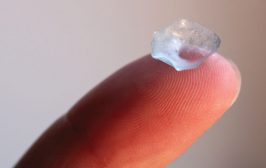-
Summer Savings: Save 20% On LASIK , Find More
*Must mention this promotion and be treated in August of 2024 to qualify. 20% off standard price of Wavelight procedure. Cannot be combined with any other offers.
Continued Care After the LASIK Procedure
Before LASIK, many patients visited their eye doctor (optometrist or ophthalmologist) mainly for updating their eyewear prescription. Do they still need regular eye care now that they rely less on glasses and contacts? The answer is a resounding yes, for several important reasons, which we will delve into below.
Treat Occasional Complications
Complications related to laser vision correction procedures are uncommon, especially after the initial postoperative period. Very rarely, a trauma, such as a pet scratching the patient’s cornea, may cause the LASIK flap to be moved and require repositioning. A corneal abrasion may require treatment and a course of topical steroids to prevent inflammation.
Chronic conditions, such as dry eye, may cause foreign body sensation, tearing, fluctuating vision and haloes at night. Most often, proper treatment with doctor-provided eye drops will help restore optimal vision. LASIK does cause a temporary reduction in tear production, a side effect that is usually bothersome for two to four weeks at most. Normal tear production levels return by six months after the procedure. LASIK patients with preoperative dry eye will, of course, continue to have the condition and require appropriate care.
Assure Proper Response to Treatment
While side effects are an issue, most patients are more concerned about the long-term stability of their improved vision. Will LASIK or PRK (photorefractive keratectomy) last? Will they have to keep coming back for retreatment? Laser retreatment (or enhancement) is uncommon after patients pass their one-year treatment anniversary. In most cases, retreatment is required because of an over-response or under-response to treatment. These issues are usually recognized and treated three to six months after the original procedure. If retreatment is required, LASIK flaps are lifted and several seconds of laser treatment are applied to correct the small remaining refractive error. If more than two years have passed since the procedure, the doctor may opt to perform a PRK procedure. This reduces the risk of surface cells growing under the flap. While some patients require retreatment, most remain stable or have insignificant changes in refractive error and vision long-term.
Monitor for Eye Diseases
A major reason to seek regular eye care is to prevent and detect eye diseases — for example, cataracts and glaucoma. Cataracts, or clouding of the eye’s natural lens, can cause changes in vision. While more common in the elderly, cataracts can occur at any age. Vision changes due to a cataract are treated by removing the cataract — not laser retreatment.
While cataracts will eventually result in visual symptoms, many eye diseases will not show symptoms until damage is severe. Glaucoma is actually a group of diseases that damage the optic nerve, resulting in blind areas. Untreated, it can result in complete blindness. Perhaps a third of glaucoma-related conditions will occur with no recorded elevated eye pressure. Only a detailed optic nerve examination or special diagnostic testing can diagnose the problem prior to damage. Glaucoma can occur at any age and is without symptoms in the early stages. After LASIK or PRK, a patient’s cornea will be thinner and traditional pressure testing devices may record an artificially low reading. Therefore, a complete eye exam is even more important to insure eye health.
Retinal tears or detachments can be asymptomatic (displaying no symptoms) in the initial stages. Of course, if patients see flashing lights or new-onset floaters, plus experience a decrease in vision, immediate evaluation is required. Routine care can often detect asymptomatic retinal pathology that increases the risk of detachment.
For all diabetics, annual retinal exams are critical. If bleeding or swelling are detected, early treatment may preserve a patient’s vision.
Regular check-ups with your eye doctor are critical — whether a patient has had laser vision correction or currently wears prescription eyewear. A qualified eye doctor can make sure that the eyes are healthy and functioning properly.
YOU MIGHT ALSO LIKE...
VISION CENTERS NEAR ME
Enter your zip code, city, or a doctor name below to find a vision center.
Find out if LASIK is right for you
Congratulations!
Your vision issues can most likely be corrected with a LASIK procedure. Schedule a free consultation today.
Answer 5 simple questions to see if you are a candidate
What is your age group?
Do you wear...
With corrective lenses, do you have...
Have you ever been told that you have astigmatism?
Have you ever been told that you have dry eyes?
Request an Information Kit
Learn about your surgeon, the latest advanced technology, procedures, options and benefits, financing options, and what to expect from your LASIKPlus experience.









